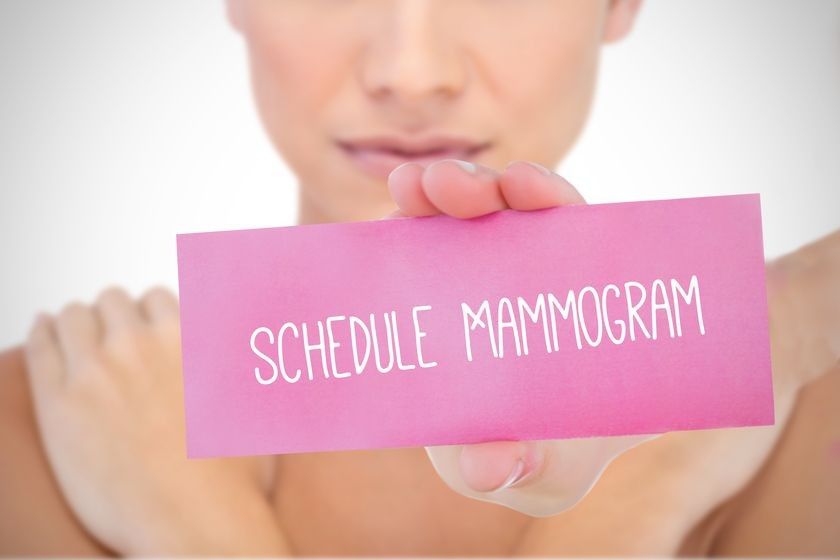
Skipping Your Mammography Exam Could Increase Your Risk of Death from Breast Cancer

Women skip mammograms for a wide variety of reasons. Many women forgo their routine mammogram because it is uncomfortable, for example, or because they are scared of the results. Other women avoid mammograms because they believe they are too young or healthy to have breast cancer. Thousands of women skipped mammograms during COVID-19. Skipping a routine mammogram can have serious consequences. In fact, it can even increase the risk of death from breast cancer.
Mammography is a type of medical imaging that creates an x-ray picture of the breast. Doctors use screening mammography exam, or mammogram, to check for breast cancer in women who do not have symptoms of the disease.
Breast cancer screening with mammography helps reduce cancer-related deaths by helping doctors detect breast cancer at earlier stages, which cancer is more responsive to treatment. Cancer is a condition characterized by rapidly dividing abnormal cells. These abnormal cells can spread to other parts of the body. In its earliest stages, for example, breast cancer cells stay localized in the breast. As the condition progresses, the abnormal breast cancer cells can spread to tissues far away from the breast. Breast cancer may not cause symptoms until its later stages, when it is harder to treat.
About 1 in 8 women in the United States will develop invasive breast cancer at some time in life. Doctors will likely diagnose 281,550 new cases of breast cancer in women and 2,650 new cases of invasive breast cancer in men in 2021. Breast cancer will claim approximately 43,600 lives in 2021.
Breast cancer does not always produce symptoms before it progresses, which makes mammography exams even more important. When symptoms do appear, they include:
- New lump in the breast or underarm
- Thickening or swelling in one or more parts of the breast
- Dimpling of breast skin
- Irritated breast skin
- Redness or flaky skin, particularly in the nipple area
- Pulling in of the nipple
- Pain in the nipple area
- Any nipple discharge, such as blood, other than breast milk
Despite its safety and effectiveness, many women do not participate in screening examinations as recommended. Some women are hesitant because they worry that mammography can expose the body to small amount of ionizing radiation, even though the risk is small compared to the benefit of detecting breast cancer early. Other women are worried about the thought of having breast cancer. A few may be concerned because they have received a false-positive result in the past, and as the result, had to undergo further testing.
According to the American Cancer Society, women who are 40 to 44 years old should have the option of starting yearly mammograms if they wish to do so. Women who are 45 to 54 years old should get mammograms every year. Those 55 and older can switch to mammograms every two years, although they can get mammograms annually if they would like. Breast cancer screening with mammograms should continue throughout a woman’s life, as long as she is in good health and expected to live at least 10 more years. Women skip these recommended screenings, though, and this may be putting them in danger. The results of a new study underscore the importance of having mammography exams as recommended.
Results from a Massive, Long-term Study Shows Skipping Mammograms Increases Risk of Death from Breast Cancer
Undergoing regular mammograms can substantially reduce a woman’s risk of dying from breast cancer, according to a study of more than a half million women, published in the journal Radiology. The team of scientists said that women who forgo even one scheduled mammography screening prior to a breast cancer diagnosis have a significantly greater risk of dying from breast cancer.
In that study, researchers looked at 549,091 women in Sweden eligible for screening mammography between 1992 and 2016. Specifically, they looked at the outcomes of women who skipped their routine mammograms and then developed breast cancer. They focused on the two most recent mammography screening appointments prior to the diagnosis of breast cancer because they wanted to understand how skipping one or two mammograms might affect the outcome in the event of a breast cancer diagnosis.
The researchers found that women who participated in either of the last two mammography opportunities prior to receiving a breast cancer diagnosis had a substantially lower risk of dying from breast cancer as compared with those women who skipped both mammograms. They also found that women who attended both screening appointments before receiving a breast cancer diagnosis fared the best – they cut their risk of death by 49 percent.
The study comes at a critical time, when thousands of women have put off their mammograms and other screening tests. Doctors are working hard to schedule their patients for routine cancer screenings. For more information about the dangers of skipping mammograms, consult with your doctor.




